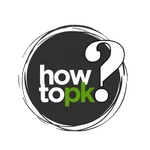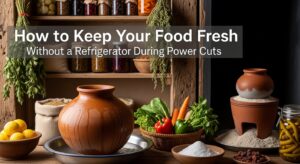Living in Pakistan, we often face the harsh reality of water shortages. Whether it’s due to erratic rainfall, dwindling dam levels, or issues with supply infrastructure, a reliable water supply can feel like a luxury rather than a given. This guide is designed to empower you with practical, effective strategies to manage water scarcity right within your home. It’s not just about surviving these shortages, but about building resilience and contributing to a more sustainable water future for our families and communities.
Water is life, and managing it wisely at home is a personal responsibility that has a collective impact. By adopting smart habits and making a few practical adjustments, you can significantly reduce your water footprint and ensure you have enough water for essential needs, even when the taps run dry.
Understanding the Water Challenge in Pakistan
Before we dive into solutions, it’s important to understand why water scarcity is such a pressing issue in Pakistan. Our country is highly dependent on the Indus River System, which relies heavily on glacier melt and monsoon rains.1 However, climate change is bringing unpredictable weather patterns, leading to more frequent droughts and floods.
Rapid population growth, outdated infrastructure, and inefficient water use in various sectors also contribute to the problem. As a homeowner, while you can’t solve these large-scale issues alone, your efforts at home play a crucial role in mitigating the impact on your household and inspiring others. Every drop saved counts towards a larger national effort.
Phase 1: Immediate Water Conservation Strategies
These are the quick, daily changes you can implement right away to make a significant difference in your water consumption. They require minimal investment but maximum awareness and discipline.
Fix Leaks Promptly
- Check taps: Listen for dripping sounds. Place a dry bucket under a tap overnight to see if any water collects.
- Inspect pipes: Look for damp patches on walls or floors, or rust around joints.
- Test flush tanks: Add a few drops of food coloring to the water in your flush tank. Do not flush. If the color appears in the toilet bowl within 10-15 minutes, you have a leak.
- Call a plumber: For any identified leaks, especially in concealed pipes, immediately call a reliable plumber. Don’t delay, as the damage and water waste can escalate quickly. For simple tap leaks, you might be able to replace a washer yourself.
- Common mistake: Assuming a small drip isn’t significant. Tip: Even a single drip per second wastes over 11,000 liters of water annually!
Optimize Bathroom Water Use
- Shorter showers: Aim for 3-5 minute showers. Instead of a continuous flow, turn off the shower while lathering soap or shampoo, and turn it back on only to rinse.
- Bucket baths: When water supply is particularly low, opt for bucket baths. Fill a bucket with just enough water for your bath, rather than using a shower. This gives you direct control over the quantity.
- Turn off the tap while brushing/shaving: Don’t let the water run continuously. Wet your brush, turn off the tap, brush your teeth, and then turn it on briefly to rinse.
- Efficient flushing: Avoid unnecessary flushing. Only flush when necessary. If you have an older, single-flush toilet, consider placing a plastic bottle filled with water or pebbles in the tank to displace some water, reducing the volume used per flush.
- Collect cold water: When waiting for hot water to come through the tap, collect the initially cold water in a bucket. This water can be used for flushing toilets, watering plants, or cleaning.
- Common challenge: Old habits are hard to break. Tip: Place a small sign near your tap or shower as a reminder to conserve water.
Smart Kitchen Water Habits
The kitchen, another high-use area, offers many opportunities for water savings. Adopt water-saving practices when washing dishes, preparing food, and cleaning.
- Wash dishes in a basin: Instead of washing dishes under a running tap, fill a basin or a stoppered sink with water for washing, and another for rinsing.
- Scrape, don’t rinse: Scrape food scraps off plates before washing them. This reduces the need for excessive rinsing.
- Defrost food in the fridge: Avoid thawing frozen food under running water. Plan ahead and move items from the freezer to the refrigerator the night before.
- Wash vegetables in a bowl: Clean fruits and vegetables in a bowl of water instead of under a running tap. The water can then be reused for plants.
- Collect RO waste water: If you use an RO (Reverse Osmosis) water purifier, a significant amount of water is discharged as waste. Collect this water in a bucket and use it for cleaning floors, washing clothes, or watering non-edible plants.
- Common question: Is the collected RO water safe for plants? Tip: Yes, the reject water from RO systems is generally safe for non-edible plants, as it mostly contains dissolved minerals, not harmful contaminants.
Laundry and Cleaning with Care
- Full loads only: Only run your washing machine when you have a full load. Partial loads use almost as much water as full loads.
- Choose appropriate settings: Use the shortest effective cycle and the lowest water level setting for your laundry.
- Pre-soak heavily soiled clothes: Soaking clothes before washing can help remove dirt more effectively, potentially reducing the need for multiple rinse cycles.
- Use a bucket for cleaning floors: Instead of hosing down balconies or courtyards, use a bucket and mop or brush for cleaning.
- Reuse rinse water: If hand-washing clothes, the final rinse water can often be reused for preliminary washing of the next batch of clothes, or for flushing toilets.
- Common challenge: Desire for perfectly clean clothes. Tip: Modern washing machines are highly efficient; ensure yours is maintained well and its settings are understood for optimal water use.
Phase 2: Mid-Term Water Management Solutions
These strategies involve a bit more planning and perhaps some minor installations, but they offer significant long-term benefits in managing water scarcity.
Implement Rainwater Harvesting
- Assess your roof and gutters: Ensure your rooftop and gutter system are clean and in good repair to effectively channel rainwater.
- Install collection points: Identify suitable downspouts from your roof gutters where you can divert rainwater.
- Choose a storage tank: Invest in a suitable water storage tank. These are available in various sizes (from a few hundred to thousands of liters) and materials (plastic, concrete, fiberglass). Place it on a stable, elevated base to allow for gravity-fed distribution, or at ground level if you plan to use a pump. Many local suppliers in Pakistan offer durable tanks.
- Install a basic filtration system: Before water enters the main storage tank, it should pass through a simple filter (like a mesh screen or a first-flush diverter) to remove leaves, debris, and initial contaminated runoff. For non-potable uses like gardening or cleaning, simple filtration is often sufficient.
- Determine usage: Decide what you will use the harvested water for. It’s ideal for gardening, car washing, cleaning floors, and flushing toilets. With proper filtration and purification (e.g., boiling or using a domestic water filter), it can even be made potable.
- Common mistake: Not cleaning the roof and gutters regularly. Tip: Debris can contaminate collected water and clog your system. Clean them before the monsoon season starts.
Explore Greywater Recycling
- Identify greywater sources: Water from bathroom sinks, showers, and laundry machines is ideal. Kitchen sink water can also be used, but it might contain more grease and food particles, requiring more complex filtration.
- Simple diversion for immediate use: For basic greywater use, you can directly divert shower or washing machine water to your garden using a hose. Use only biodegradable soaps and detergents if you’re directly applying it to plants.
- Install a basic filtration system: For more consistent use, especially if storing for a short period, consider a simple sand or gravel filter to remove larger particles.
- Separate plumbing: Ideally, a dedicated greywater plumbing system can be installed during new construction or major renovations. This involves diverting greywater to a separate holding tank, from which it can be pumped to garden hoses or a toilet flushing system.
- Consult an expert: For advanced greywater systems, it’s best to consult a local plumbing expert or water management specialist who understands Pakistani conditions and can recommend appropriate, cost-effective solutions.
- Common challenge: Concerns about hygiene and safety. Tip: Greywater should ideally be used within 24 hours and not stored for long periods without proper treatment, as it can develop odors or harbor bacteria. Avoid using it for drinking, cooking, or bathing.
Invest in Water-Efficient Fixtures
- Low-flow showerheads: These mix air with water to create pressure while using less water. They are widely available in plumbing stores across Pakistan. Look for models that reduce flow rates (e.g., 9 liters per minute or less).
- Faucet aerators: These inexpensive devices can be screwed onto most existing taps, adding air to the water flow and reducing consumption by up to 50% without compromising pressure.
- Dual-flush toilets: These toilets offer two flush options: a full flush for solid waste and a half flush for liquid waste, significantly reducing water used per flush. While replacing an entire toilet can be an investment, it pays off in the long run.
- Pressure-reducing valves: If your home has very high water pressure, installing a pressure-reducing valve at the main water inlet can help control flow and prevent wastage from excessive pressure at fixtures.
- Common question: Are these fixtures expensive? Tip: While some high-end models can be pricey, many affordable and effective water-saving fixtures are available in the Pakistani market. The savings on your water bill will quickly offset the initial cost.
Phase 3: Long-Term Water Security and Community Engagement
These strategies look beyond immediate household savings, focusing on sustainable practices and contributing to broader water security.
Optimize Outdoor Water Use (Gardening, Washing)
- Water early morning or late evening: Water your plants during cooler parts of the day to minimize evaporation. Watering in direct sunlight means much of the water is lost before it reaches the roots.
- Use drip irrigation or soaker hoses: These systems deliver water directly to the plant roots, reducing evaporation and runoff compared to traditional sprinklers or hand-watering. They are becoming more accessible in Pakistan.
- Choose drought-tolerant plants: Opt for native plants or varieties that thrive in Pakistan’s climate and require less water. Your local nursery can advise you on suitable options.
- Mulch your garden beds: Apply a layer of mulch (like wood chips, leaves, or straw) around your plants. This helps retain soil moisture, suppress weeds, and regulate soil temperature, reducing the need for frequent watering.
- Sweep, don’t hose: Use a broom to clean driveways, sidewalks, and patios instead of hosing them down.
- Wash cars efficiently: Use a bucket and sponge for washing your car instead of a running hose.
- Common mistake: Overwatering or watering indiscriminately. Tip: Feel the soil before watering. If it’s still damp a few inches down, your plants likely don’t need water yet.
Implement Smart Water Storage Solutions
- Overhead tanks: Ensure your overhead water tank is of sufficient capacity for your household’s needs (e.g., 1-2 days’ supply). Check for leaks and ensure it’s regularly cleaned to prevent bacterial growth and sediment buildup.
- Underground tanks (sumps): Many homes have underground water tanks (sumps). These are excellent for storing large volumes of water, especially if your municipality provides water at specific times or through tankers. Ensure your sump is properly sealed to prevent contamination and leakage.
- Material choice: High-quality plastic or fiberglass tanks are popular in Pakistan due to their durability and resistance to corrosion. Ensure they are food-grade if storing drinking water.
- Location and access: Place tanks in shaded areas to minimize water temperature rise and algae growth. Ensure easy access for cleaning and maintenance.
- Pump systems: Invest in a reliable water pump to transfer water from underground sumps to overhead tanks or directly to your home’s plumbing. Consider automatic pump controllers to prevent dry running and save electricity.
- Common challenge: Algae and bacteria buildup in stored water. Tip: Regular cleaning of water tanks (at least once every 6-12 months) is crucial to maintain water quality. Keep tanks covered and sealed to prevent contamination.
Educate and Involve Your Family
- Explain the “why”: Talk to your family, especially children, about the water situation in Pakistan and why conservation is vital. Use simple terms and real-world examples.
- Lead by example: Practice what you preach. Your habits will naturally influence others in the household.
- Assign responsibilities: Involve children in water-saving tasks, such as turning off taps, reporting leaks, or watering plants with collected greywater.
- Regular reminders: Gentle reminders can help reinforce good habits. You can even put up small, friendly notes near taps or in bathrooms.
- Celebrate successes: Acknowledge and appreciate efforts made by family members. This positive reinforcement encourages continued participation.
- Common question: How do I convince skeptical family members? Tip: Focus on the tangible benefits, like lower utility bills and ensuring water availability for everyone, especially during peak shortage times.
Engage with Your Community and Authorities
- Join local initiatives: Look for community groups or NGOs working on water conservation or environmental issues in your area. Offer your time or support.
- Report water wastage: If you notice large-scale water wastage (e.g., broken public pipes, continuous overflow from tanks in public places), report it to your local water supply authority (e.g., WASA in Punjab, KW&SC in Karachi).
- Advocate for policy: Support initiatives that promote sustainable water practices, efficient irrigation in agriculture, and proper maintenance of water infrastructure.
- Share knowledge: Share your water-saving tips and experiences with neighbors, friends, and relatives. Encourage them to adopt similar practices.
- Consider community-level rainwater harvesting: In some areas, communities can collaborate on larger rainwater harvesting projects or shared water storage facilities.
- Common challenge: Feeling like your individual efforts don’t matter. Tip: Remember that every drop saved collectively adds up, and your voice, when combined with others, can influence larger change.
Maintaining Water Quality in Stored Water
- Clean tanks regularly: As mentioned before, clean your overhead and underground tanks every 6-12 months. Drain them completely, scrub the interior walls, and rinse thoroughly.
- Keep tanks covered and sealed: Ensure all water storage openings are tightly covered to prevent dust, debris, insects, and small animals from entering. Mosquito nets or fine mesh can be used on overflow pipes.
- Prevent direct sunlight: Where possible, choose opaque tanks or paint transparent ones to block sunlight, which promotes algae growth.
- Use appropriate purification methods for potable use:
- Boiling: The simplest and most effective method. Bring water to a rolling boil for at least one minute to kill most bacteria and viruses.
- Household filters: Invest in a good quality domestic water filter (e.g., gravity-fed ceramic filters, RO systems, or UV purifiers) for drinking and cooking water. Ensure filters are regularly cleaned or replaced according to manufacturer guidelines.
- Chlorine tablets ( sparingly ): In emergencies or for large volumes of water, water purification tablets containing chlorine can be used. Follow instructions carefully regarding dosage and contact time.
- Separate plumbing for potable and non-potable water: Ideally, have separate lines for drinking/cooking water and water used for flushing/gardening.
- Common mistake: Assuming all stored water is safe for drinking without treatment. Tip: Always treat stored water before consuming it, especially if its source or storage conditions are uncertain.
Conclusion
Managing water shortages in your Pakistani home effectively is a journey that involves awareness, discipline, and a willingness to adapt. From fixing a dripping tap to investing in rainwater harvesting, every step you take contributes to a more secure and sustainable water future. It’s about changing habits, making smart choices, and becoming a water-conscious citizen.
The challenges of water scarcity in Pakistan are real, but with collective effort and individual responsibility, we can build resilient households and communities that are better equipped to face them. Start small, be consistent, and inspire those around you. Together, we can ensure that every precious drop is valued and used wisely.
Resources
- Local plumbing and hardware stores for water-efficient fixtures, pumps, and water tanks (e.g., Nepro Pipes, Shandar, various local brands).
- Water and Sanitation Agencies (WASA) or local municipal bodies for reporting leaks and understanding local water supply schedules.
- Professional plumbers and water management consultants for installation of greywater systems, rainwater harvesting, and leak detection.
- NGOs and community organizations working on water conservation initiatives in Pakistan.







